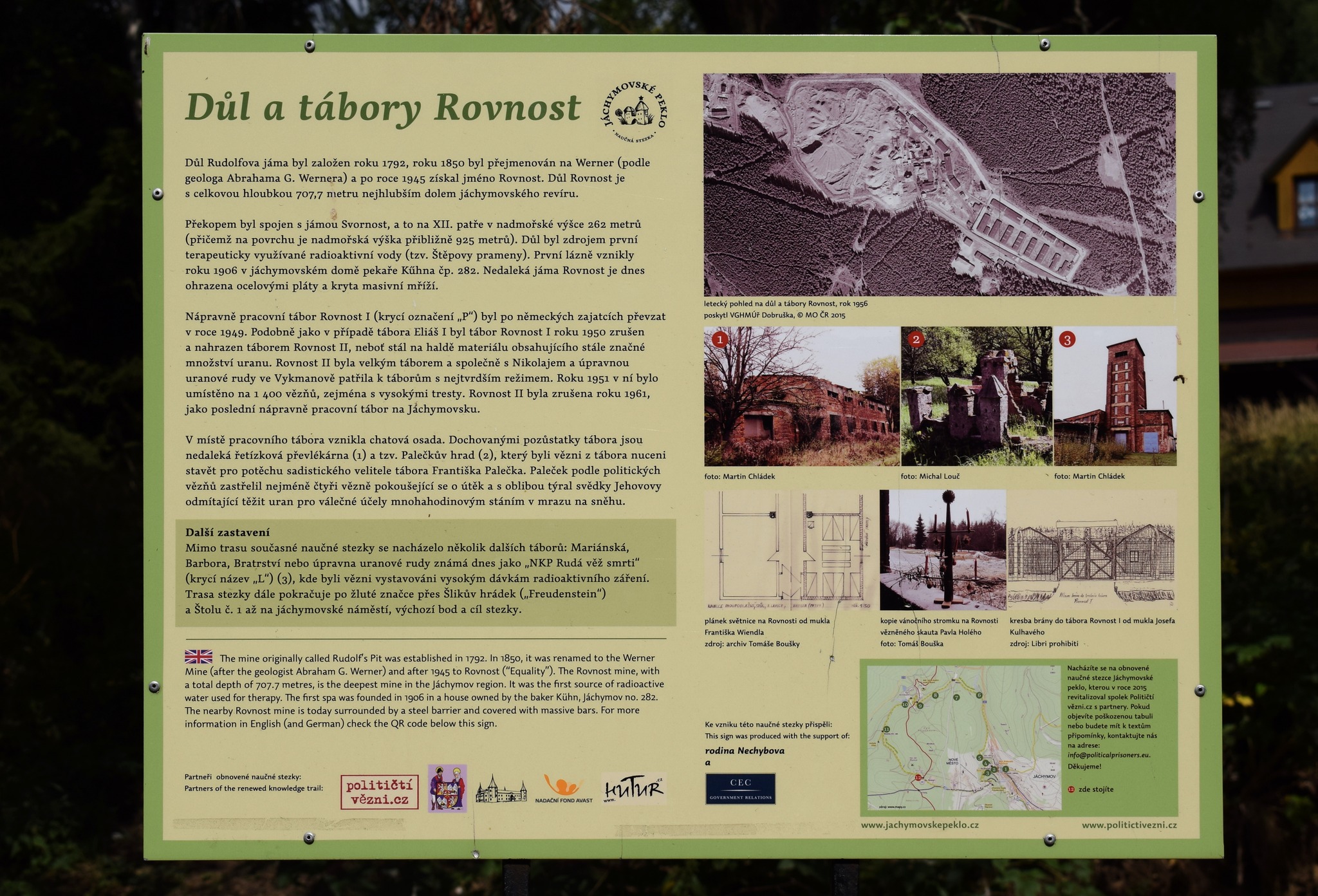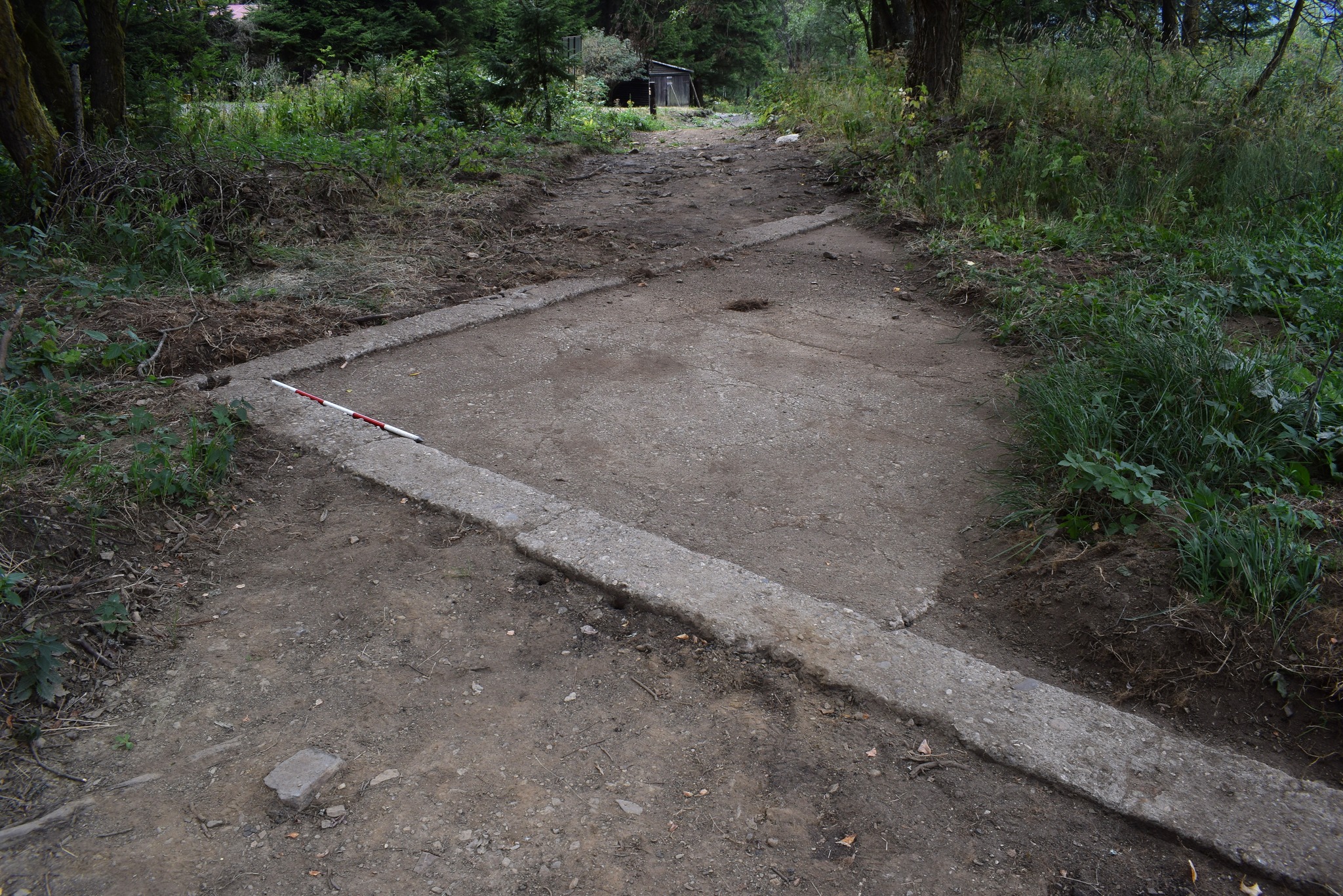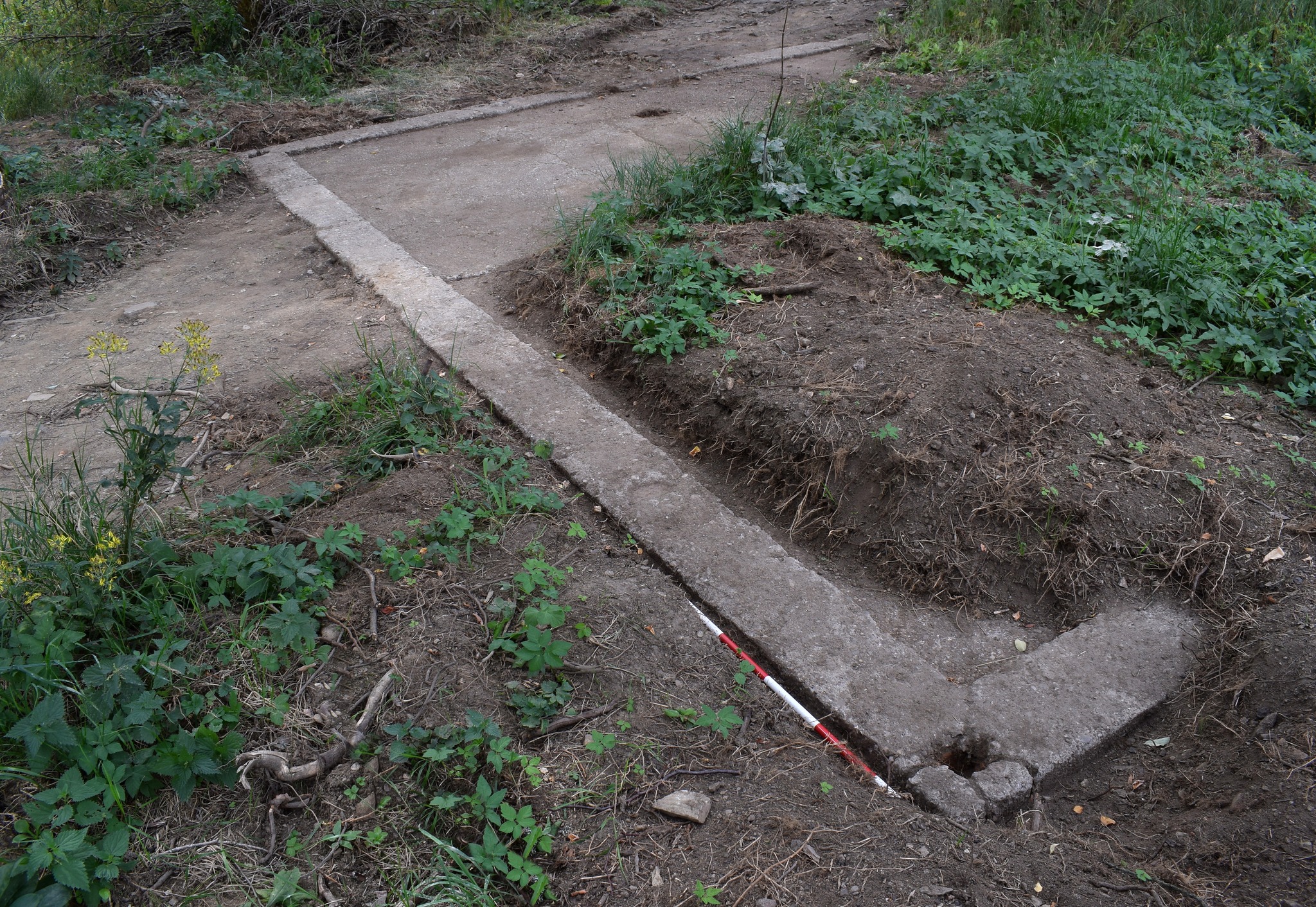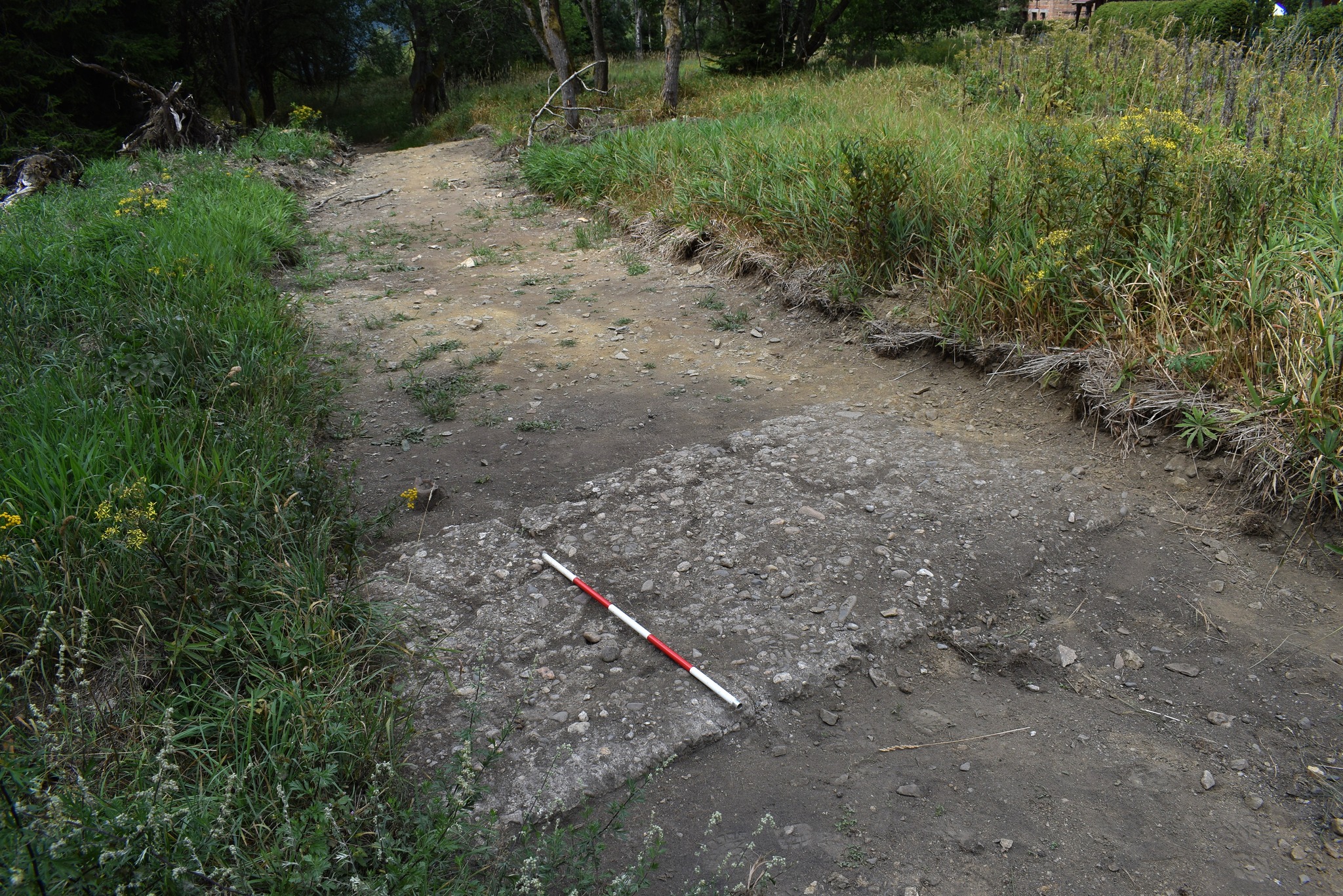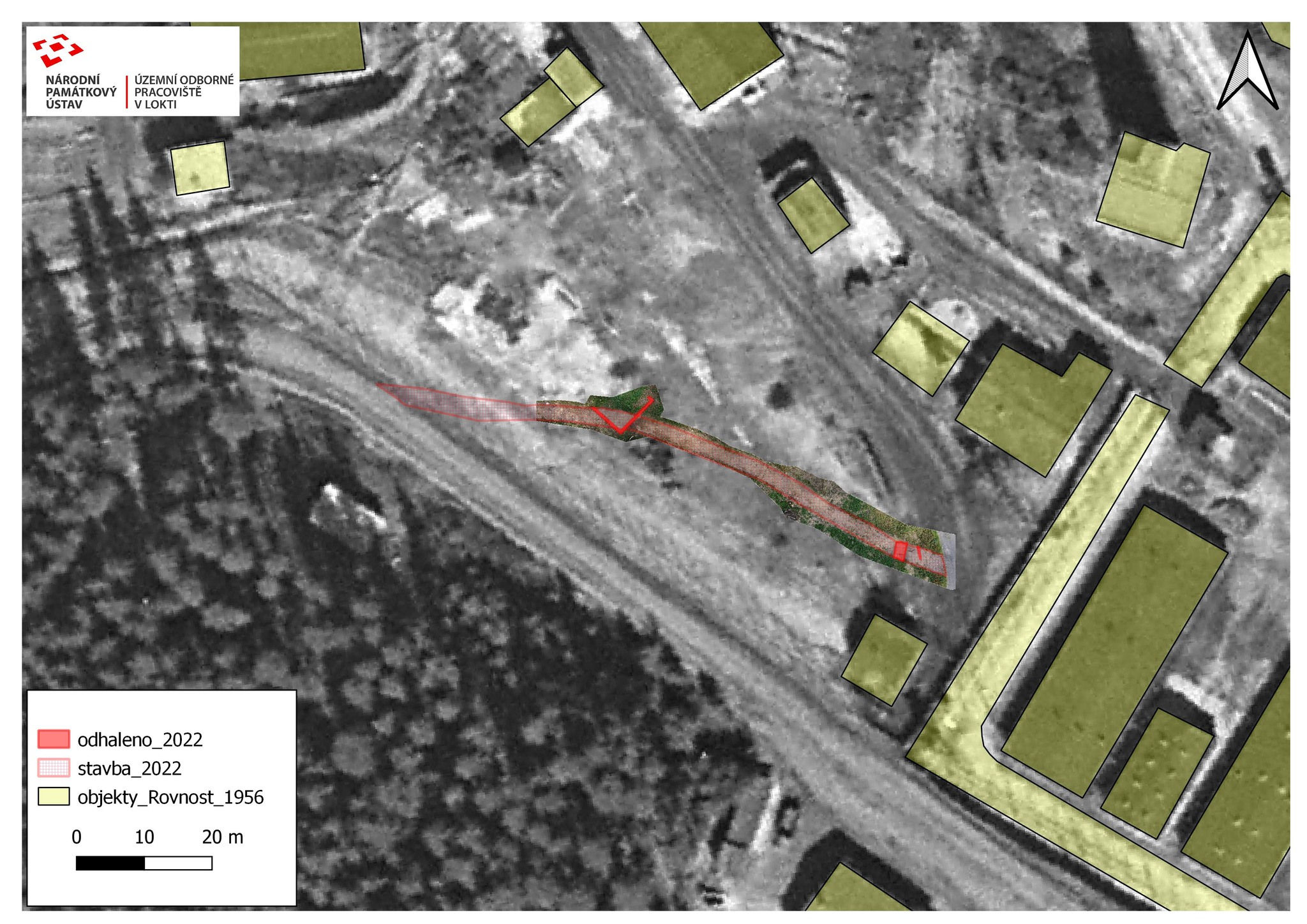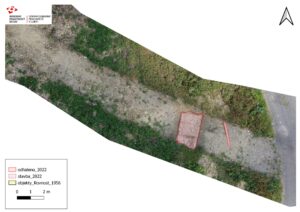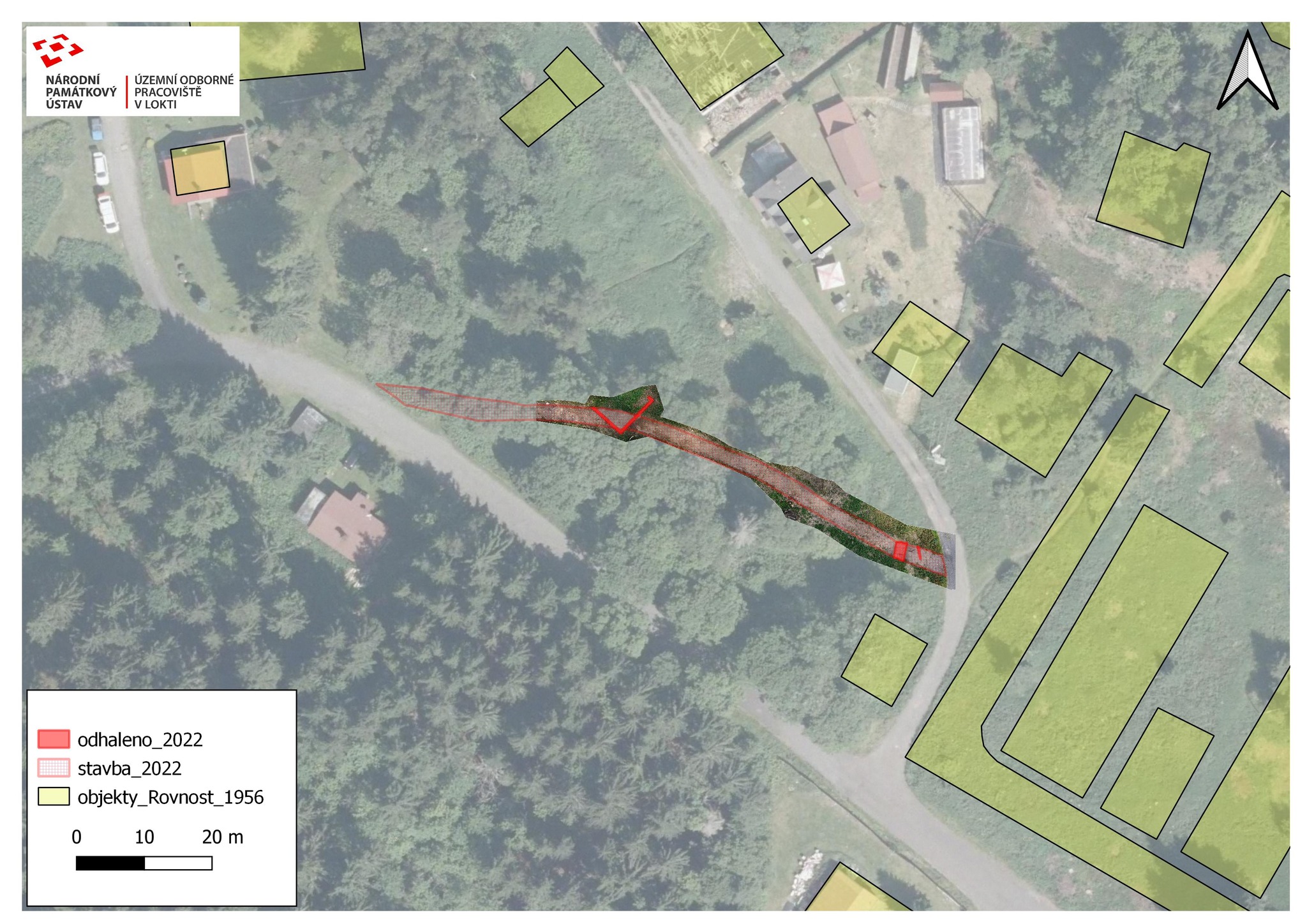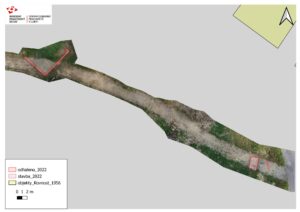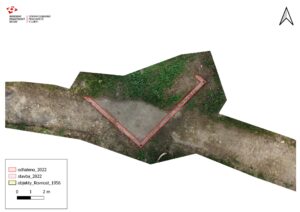Paleček’s Castle
Paleček’s Castle („Palečkův hrad“) is a model of a Gothic castle, about 150 centimeters high, the remains of which still stands across the street from the Řetízkárna in the area of the former Rovnost uranium mine. Shrouded in prisoner legends and historical speculation, the building is a prominent feature of Jáchymov mythology. Journalists and some former political prisoners have proposed that the structure was built by prisoners in the last months of the camp’s operation under the instruction of Chief František Paleček, the particularly esoteric and sadistic commander of the Rovnost camp. To date, however, no prisoner has confirmed that they personally worked on the construction of the model, and incomplete archival records mean that it is currently impossible to confirm when the castle was built and by whom.
Allegedly built to beautify the camp assembly square, Paleček’s Castle’s castle stands as a monument to the strange realities of the Jáchymov mines, where enslaved prisoners, the camp guards and commanders, and well paid and cared for civilian miners and technicians worked together for twelve years.
